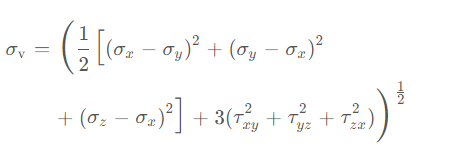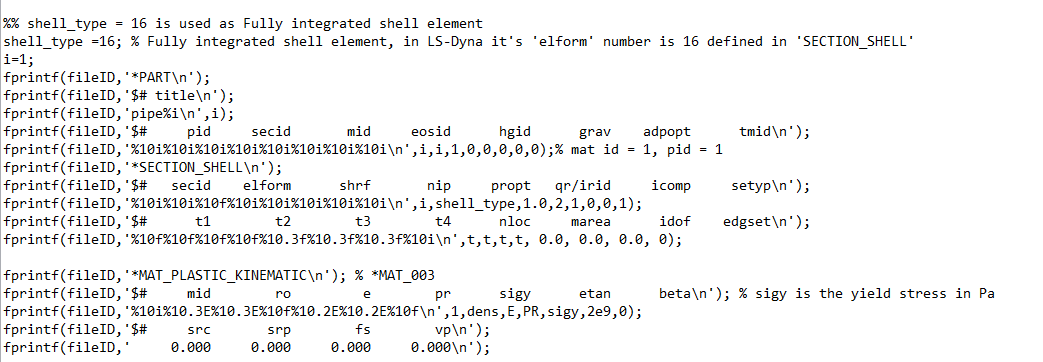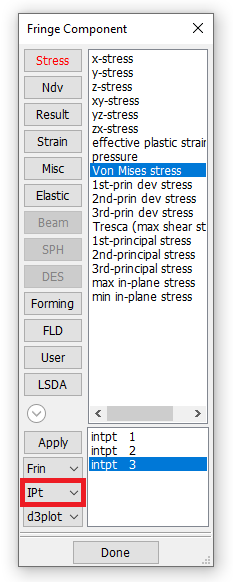TAGGED: lsdyna
-
-
January 8, 2024 at 9:16 pm
mmia1
SubscriberHi
I perofrmed some analysis in LSDyna. Upon checking the Von Misses stresses, I found that they do not match with the value I calculated using standard von misses stress formula as below:
I used fully integrated shell element (ELFORM = 16) with two integration points. I opened the elout file where I found that LSDyna wrote stress output (sigma-x, sigma-y etc) at two integration points. It basically looks like below:
So, when I checked any element say element 1 and plot von misses stress variation with time in LSPREPOST. I found that it does not match with what I got using elout stress values in von Misses stress formula.
Can anyone help me in this regards?
-
January 8, 2024 at 9:38 pm
Armin
Ansys EmployeeHello,
Could you confirm if the material model used in the simulation also uses the von Mises criterion to calculate the equivalent stress?-
January 8, 2024 at 10:13 pm
mmia1
SubscriberHi
I defined my material and section card like below:
I am not sure how von Mises criteron can be used herein or does it look okay?
In another note, Do you know how lsdyna calculated the vin misses stress showed in lsprepost? Does it use a different formula? What I think it calculates stresses at two integration points for fully integrated shell (2 integration points) and averaged value displayed in lsprepost but not sure.
-
-
January 9, 2024 at 2:39 pm
Armin
Ansys Employee -
January 9, 2024 at 3:50 pm
mmia1
SubscriberThank you for the reply.
What I have understood yesterday while working is that the discrepancy occurred due to maxint in *Database_Extent_Binary and NIP(number of integration point) in *Section_Shell. I considered default maxint =3 while in *Section_Shell I considered nip as 2.
For shell fully integrated element, LSPREPOST showed results at reference surface which is middle surface and this is corresponding to first integration point. In case of maxint=3, there are middle surface(first integration point), inner surface (second integration point) and outer surface (third integration point).So I revised the k file and used nip=3 and maxint =3 and when I read the first integration point results only it matched with lsprepost values.However, if elements are not distorted or for small displacement case, then the integration point results do not vary too much and the above thing does not matter.I will ask a last thing now. When I checked the output file, the inner surface/lower surface (second integration point) always have larger stress compared to middle surface (first integration point).In this regard, what to do? Should I read only first integration point (middle surface) stress value to be consistent with lsprepost values or I should read the second integration point i.e. maximum stress value out of three integration points?Thanks again.
-
January 9, 2024 at 5:02 pm
Armin
Ansys EmployeeThank you for sharing these observations.
I would suggest using the maximum value since it is safer from a design perspective.
As a side note, I know that for some fracture models, you can specify the percentage of integration points that must reach failure criterion before the element is considered fully failed. For example, you can specify that 60% of integration points of a shell element should reach failure condition so that the whole element is considered as failed and be removed (eroded) from the model.
-
- The topic ‘Discrepancy between LSPrepost and hand calculations -Shell element stress output’ is closed to new replies.



-
4618
-
1530
-
1386
-
1210
-
1021

© 2025 Copyright ANSYS, Inc. All rights reserved.











